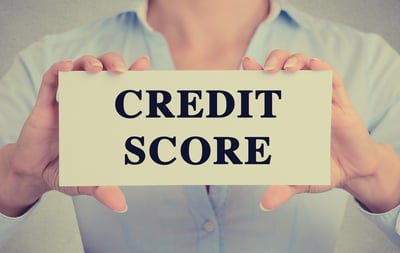So You Defaulted
How to get your credit back on track after a big mistake
 According to StudentLoanHero, payment history accounts for 35% of your FICO score. That means each time you miss a payment on a loan or credit card, you will lose a significant amount of points on your score. If you miss multiple payments across multiple loans or credit card accounts, your FICO score can tank in a matter of months. Unfortunately, bringing your score back into the black isn’t always easy. With that being said, there are ways to rehab your FICO score even after the default of a loan or credit card account. So, what should you do if you’ve defaulted?
According to StudentLoanHero, payment history accounts for 35% of your FICO score. That means each time you miss a payment on a loan or credit card, you will lose a significant amount of points on your score. If you miss multiple payments across multiple loans or credit card accounts, your FICO score can tank in a matter of months. Unfortunately, bringing your score back into the black isn’t always easy. With that being said, there are ways to rehab your FICO score even after the default of a loan or credit card account. So, what should you do if you’ve defaulted?
Step 1: Check your Credit Report
The first thing you’ll need to do is find out what your starting point is. It might seem scary at first, but you’ll need to comb through your credit report to find any inconsistencies and to completely understand what you owe, and what accounts require immediate attention. Your credit report is free and easy to obtain at AnnualCreditReport.com.
Once you have a list of the loans that are in default, you can trace them to the proper agency. Defaulted loans often end up at collection agencies. When a collection agency is in possession of a loan, their primary goal is to get the money that is owed to them. Sometimes, they can offer significant savings to you to repay the loan.
Step 2: Call the Agencies that Hold Your Loans
When you’ve established exactly what accounts are destroying your FICO score, you’ll need to call the agencies as soon as possible. If you are willing to work with the collection agencies that hold your loans, you’d be surprised at how amicable they can be. While most people think of collection agencies and their representatives as coldhearted finance people, the truth is, they are merely doing a job. The easier you make their job, the more likely they will be to work with you.
Consider your first phone call as an information gathering session. You don’t need to make a decision on the spot and don’t feel pressured to do so. Gather as much info as you can, and consider your options before making a final decision.
Step 3: Pick the Best Option for You
When you default on a student loan, for example, you often have three options. You can either enter into a loan rehabilitation program, you can consolidate the debt into another loan, or you can pay the full balance owed.
Obviously, paying the full balance off immediately will have the quickest impact on your debt and credit score, but it is rarely an option for most people. After all, if you had $15,000 laying around, you probably wouldn’t have defaulted in the first place. Consolidating the loan is another option, but the payment rates can be rather high, and many people find their credit score is too low to qualify for a consolidation loan. The final option is the rehabilitation program. With these programs, you’ll be assigned a monthly payment and must make on-time payments for a set number of months to get the account out of collections. After that, the loan will be transferred back to a traditional student loan servicer, and you’ll continue to make payments.
Step 4: Rehabbing Your Score
Once you’ve got your payment plan set, you’ll want to pay off the debt as quickly as possible, as well as any other debts you have. This may mean cutting corners and avoiding fun activities in the name of paying off your debt, but the quicker you get your debt down, the quicker your score will rebound.
Finding out you’ve defaulted can be scary. You may think you’re on the verge of financial ruin, but defaulting doesn’t have to destroy your FICO score forever. With diligence, attention to detail, and some budgeting, you can get things back on track.
